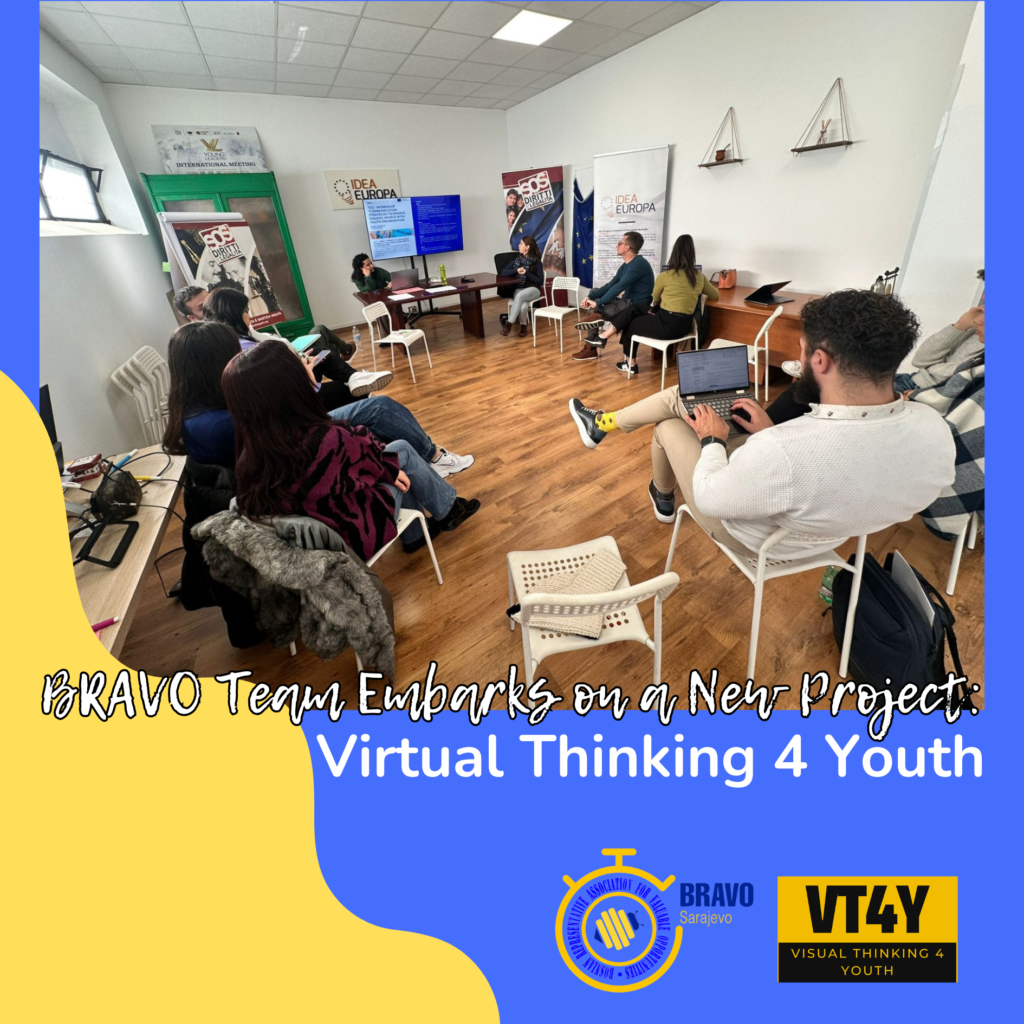
The amazing BRAVO team recently participated in the Kick-off meeting for a new project set to unfold in the coming months. The meeting, held in the historic city of Rome, brought together partners from Bosnia and Herzegovina, Italy, Albania, North Macedonia, and Montenegro, marking the initiation of a collaborative effort to tackle the topic of social inclusion of people with dyslexia. The Kick-off meeting served as a platform for all project stakeholders to convene, exchange ideas, and lay the groundwork for the upcoming initiative.
BRAVO Director Ismail and Secretary General Edelhida were present to represent our organization and contribute to the discussions that unfolded throughout this 2-day long meeting.
This Kick-Off meeting encompassed discussions about the future plans of the project. BRAVO team and other partners held an throughout discussion about all of the planned activities and roles of each partner within those activities.
WHAT IS THIS PROJECT ABOUT
The Visual Thinking 4 You(th) project, has the general objective of promoting the social inclusion of dyslexic young people between 13 and 19 years old, through visual thinking, which consists in transmitting and exposing ideas through simple and easily recognizable images.
The objective of this method is to improve the learner’s learning level by allowing him, through the use of images, to better understand ideas, define objectives, identify problems and generate new concepts and it is particularly effective for those who have cognitive peculiarities such as dyslexic people. In this context, the socio-educational animator, a figure targeted by the project activities, proves to be a key element for the involvement of these young people. The consortium, after an analysis of the phenomena carried out with the stakeholders, has identified the main critical issues that have allowed to set the specific objectives functional to the achievement of the general purpose:
- Improvement of the degree of knowledge by the youth workers of dyslexia and the potential of visual thinking as a tool for inclusion and learning. At the end of the first training activity will be recorded an improvement of at least 60%.
- Construction of communication strategies to engage dyslexic youth ages 13-19 within youth organizations that offer innovative and complementary learning approaches to formal education. At the end of the first workshop, the percentage of youth approaching these organizations will increase by at least 30% over the values initially recorded;
- Creation of learning methodologies focused on visual thinking specifically for dyslexic youth in order to increase their degree of integration and learning. At the end of the second workshop, the approach adopted with young people aged 13-19 will be at least 60% more effective and integrative than more traditional methodologies
